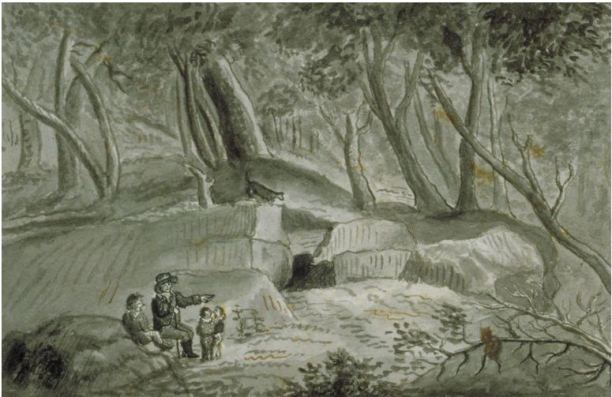By Emily Dunnack
Israel Putnam is a name that stands out in the colonial history of Connecticut as a war hero of the French and Indian War and the American Revolution. Prior to his wartime glory, he earned the nickname “Wolf Putnam” by killing what was believed to be the last wolf in Connecticut when he was a young farmer in the eastern Connecticut town of Pomfret.
The disappearance of an animal from its native habitat is no longer cause for celebration, but life in the mid-1700s was very different than today. To make a go of farming, you were up against many obstacles—the harsh New England winters, rocky soil, and predators destroying your livestock. A wolf was not viewed as a mysterious, beautiful wild animal but a serious threat to your livelihood.
There are many versions of the story of Israel Putnam and the wolf, but the original is found in the book The Life and Heroic Exploits of Israel Putnam, written by General David Humphreys, and first published in Hartford in 1788 while Putnam was still alive.

Israel Putnam’s Wolf Den. Photograph by an unknown photographer, ca. 1900. History buffs continued to trek to the Wolf Den throughout the 1800s – Connecticut Historical Society
The story goes that one night in 1742, 70 of Putnam’s sheep and goats were killed by a wolf that had been terrorizing the Pomfret area for years. This was not just any wolf. She was a tricky animal who, despite losing most of the toes on one of her feet in a steel trap, regularly evaded capture by “flying to the western woods,” returning each fall with a new litter of pups. Every year, the hunters were able to destroy the wolf pups, but the mother wolf continued to elude them.
One fall evening, Putnam and his neighbor tracked the wolf through newly-fallen snow all the way to the Connecticut River and back. Using a pack of bloodhounds, they drove her into her den about three miles from Putnam’s farm. After all efforts to get the wolf from her den failed, Putnam decided there was no other option but to enter into the den himself. He removed his jacket and waistcoat, lit some strips of birch bark as a torch, tied a rope around his legs, and descended into the cave-like den. According to Humphreys, Putnam made three trips down into the den: the first trip to determine the location of the wolf, the second to shoot and kill her, and the third to bring up her body.
The Wolf Den was a popular tourist attraction during the 19th century and today is part of Mashamoquet Brook State Park in Pomfret, Connecticut. The spot, which was added to the National Register of Historic Places in 1985, is accessible to hikers.
Emily Dunnack is the Head of Education Programs at the Connecticut Historical Society.
© Connecticut Public Broadcasting Network and Connecticut Historical Society. All rights reserved. This article originally appeared on Connecticut History | WNPR News
Note: ConnecticutHistory.org does not edit content originally published on another platform and therefore does not update any instances of outdated content or language.









